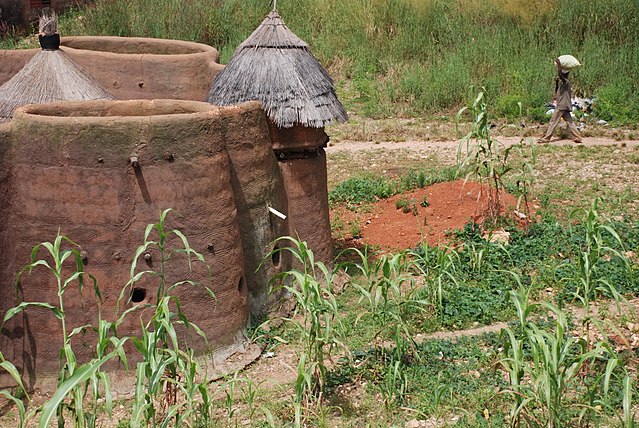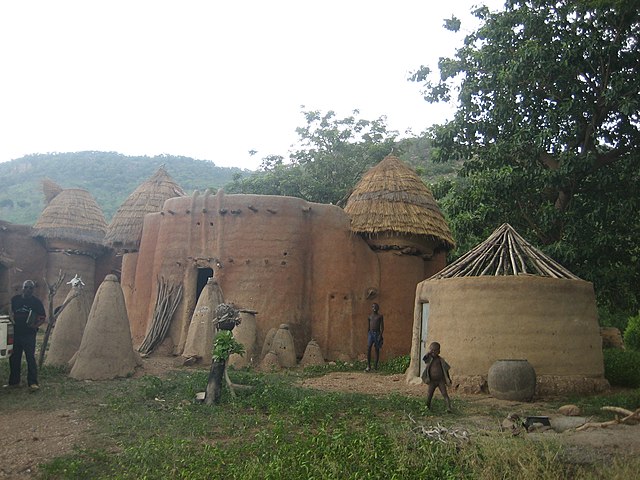The Tammari people, also known as Batammariba, Tamberma, Somba, Otamari or Ottamari, are an Oti–Volta-speaking people of the Atakora Department of Benin where they are also known as Somba and neighboring areas of Togo, where they are officially known as Ta(m)berma. They are famous for their two-story fortified houses, known as Tata Somba, in which the ground floor houses livestock at night, internal alcoves are used for cooking, and the upper floor contains a rooftop courtyard that is used for drying grain, as well as containing sleeping quarters and granaries. These evolved by adding an enclosing roof to the clusters of huts, joined by a connecting wall that is typical of Gur-speaking areas of West Africa.
A Tammari house. The thatched structure in the middle of the roof (left) covers sleeping quarters, whereas the one on the right is a granary. The cylindrical structures in the walls are used for storage or for keeping small livestock.
The entrance of a Tammari house, with twin altars
A Tammari house with granaries. The forked poles at the left granary are ladders, with steps cut along their lengths
Neighboring Tammari houses, with multiple altars
Atakora is the northwesternmost department of Benin. Externally it borders Togo to the west and Burkina Faso to the north; internally it borders the departments of Alibori, Borgou and Donga. Major towns in the Atakora include Natitingou and Tanguiéta, and the major tourist areas include the Tata Somba houses, Pendjari National Park, and various waterfalls. The department of Atakora was bifurcated in 1999, with its southern territory removed to form the newly created Donga Department. The capital of Atakora Department is Natitingou, which lies among the Atakora Mountains.
Atakora Department
Unpaved road in Atakora, near the border with Togo






